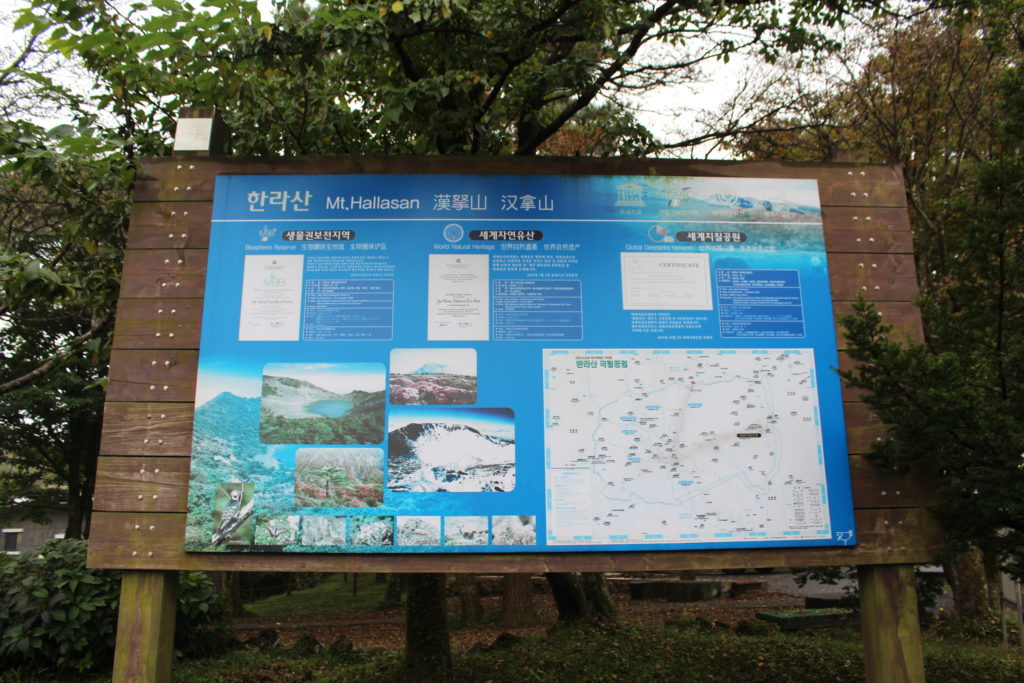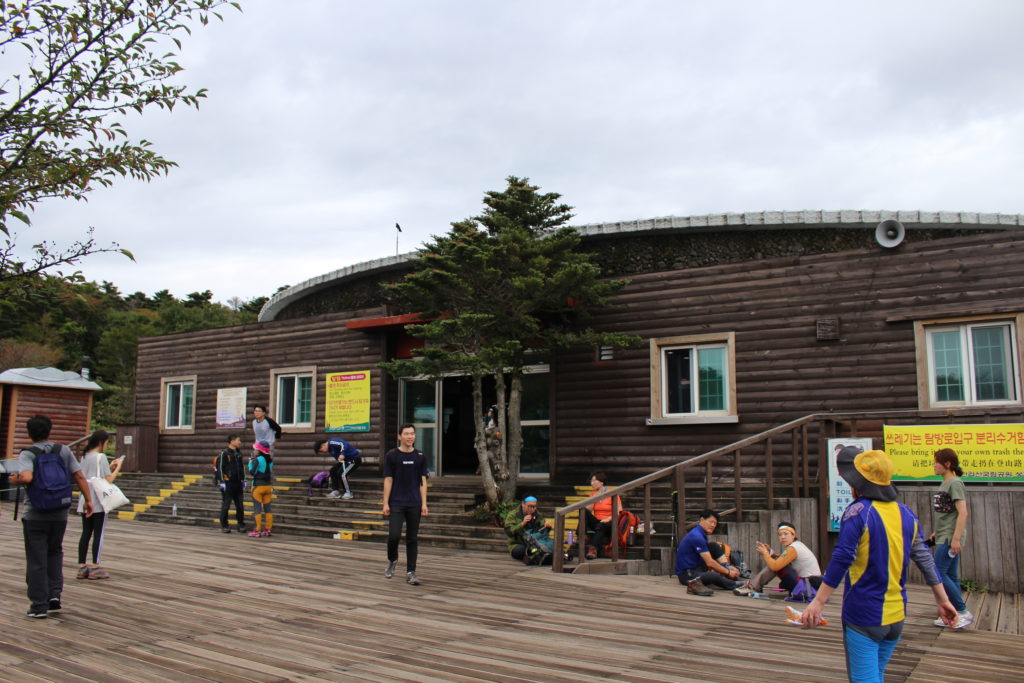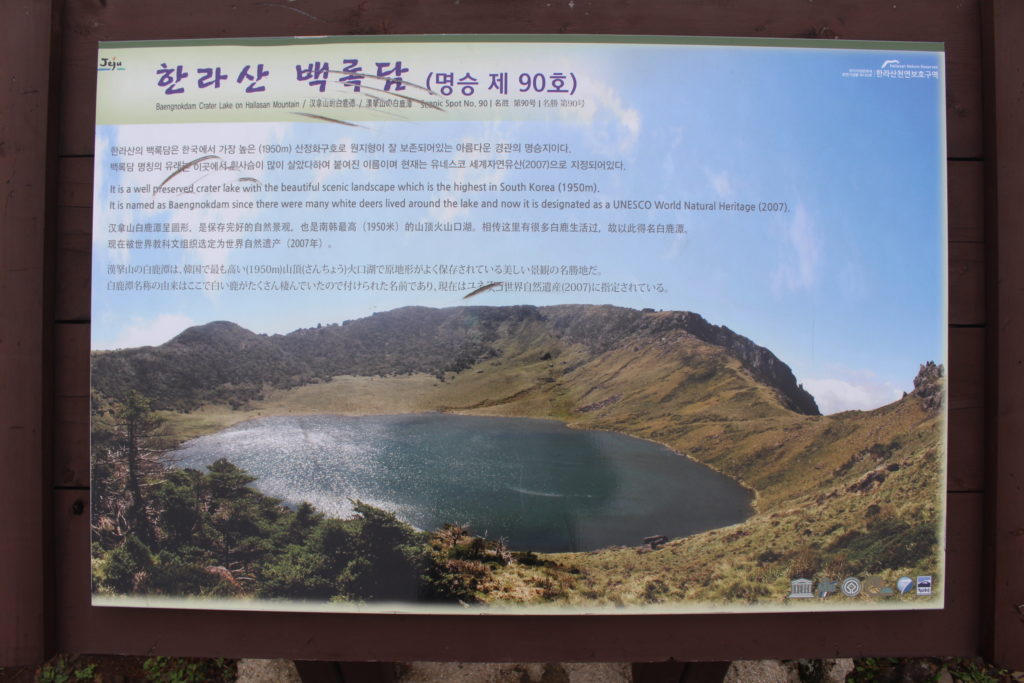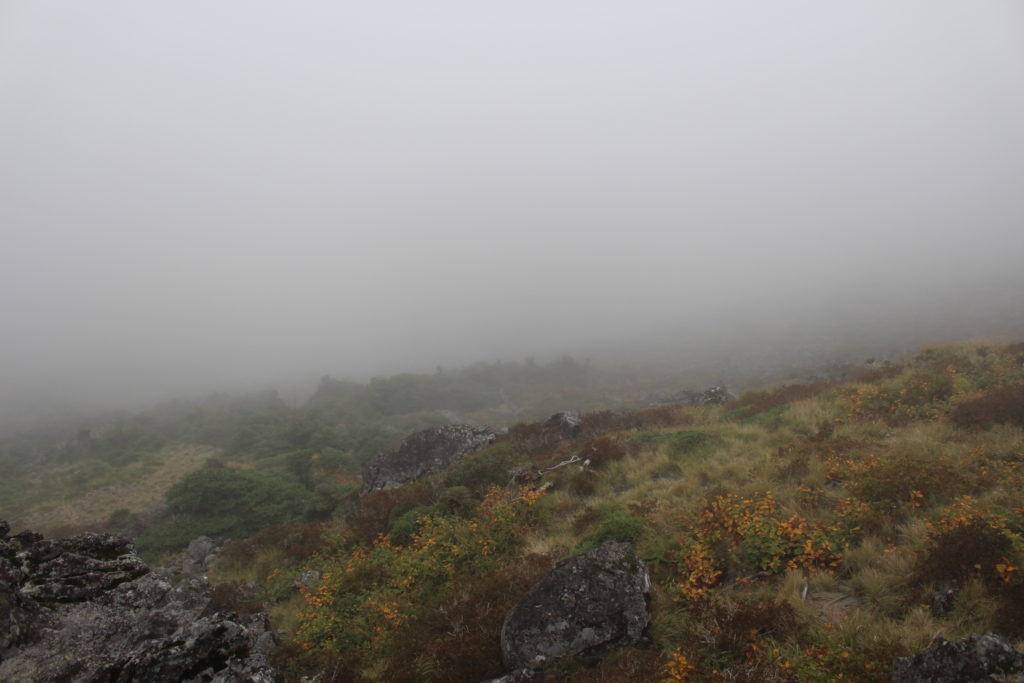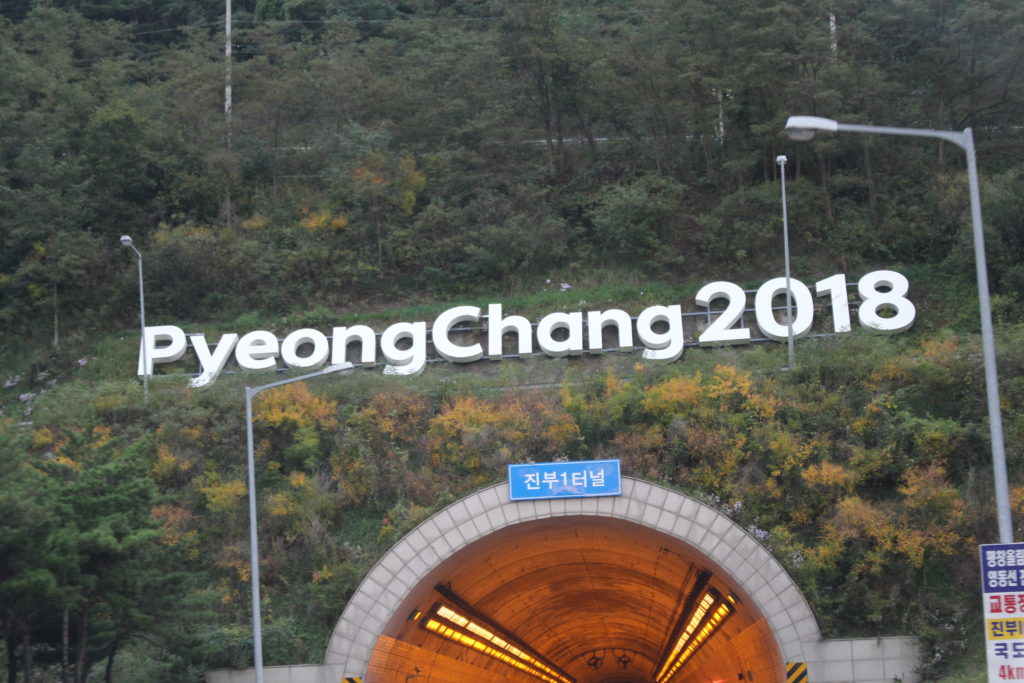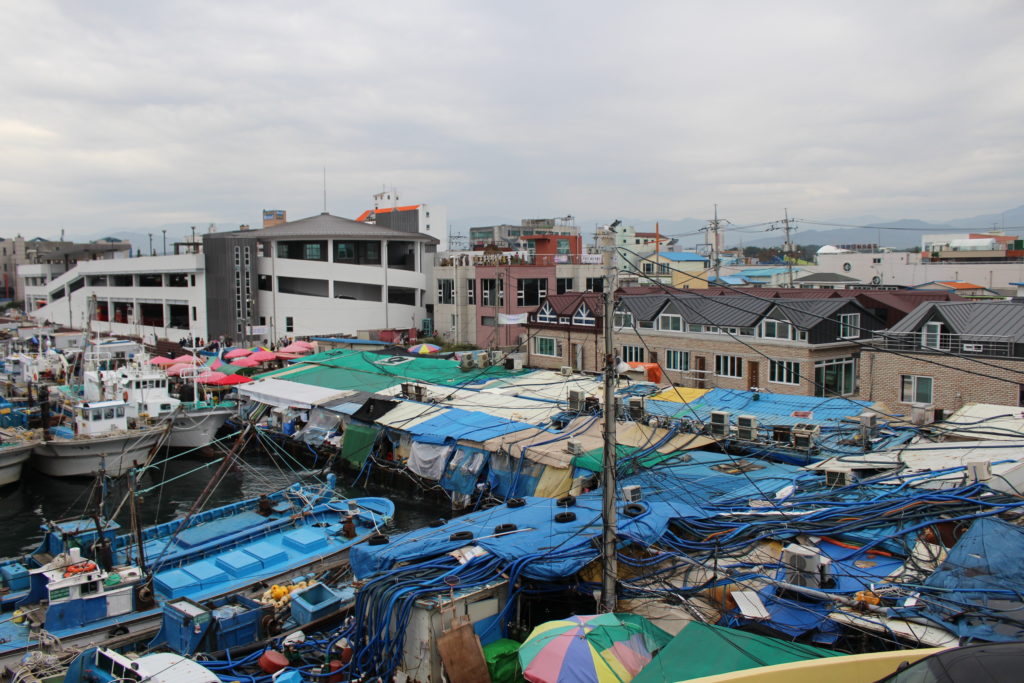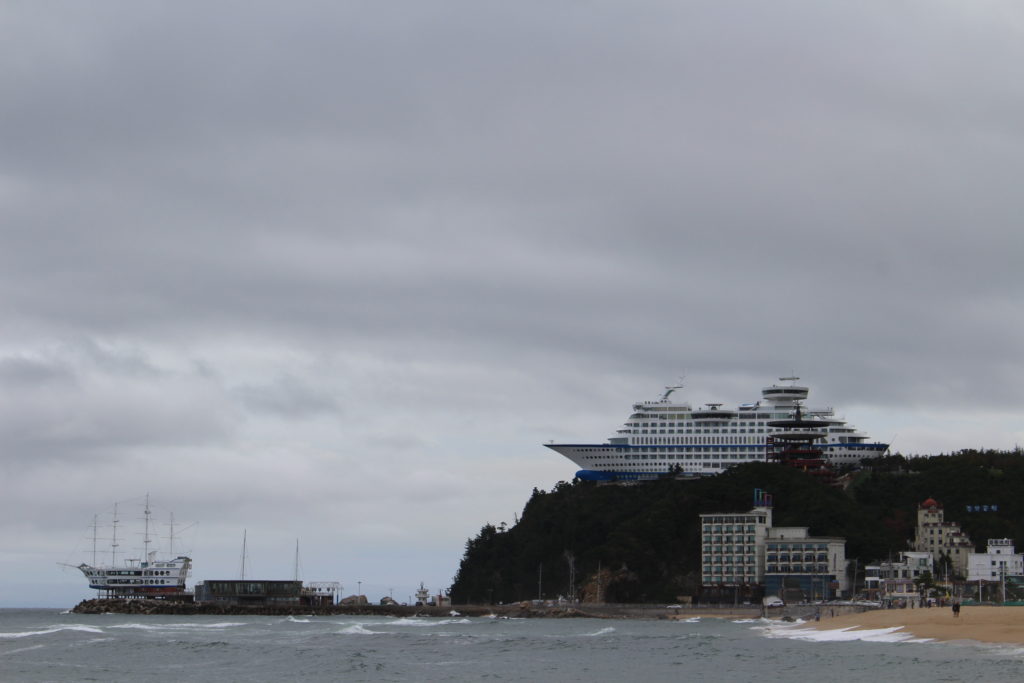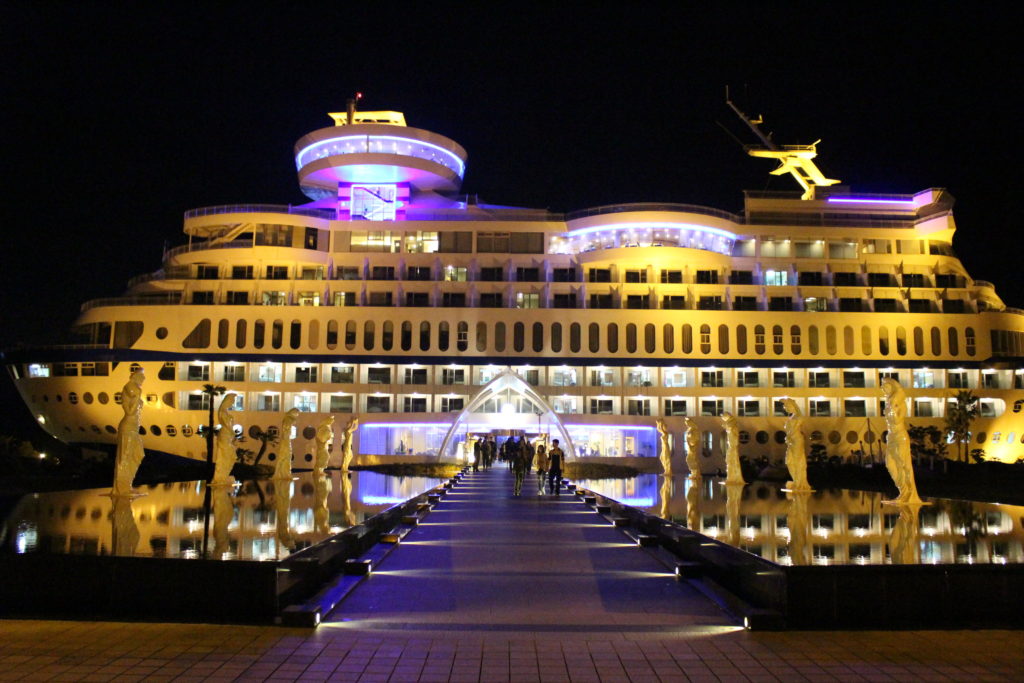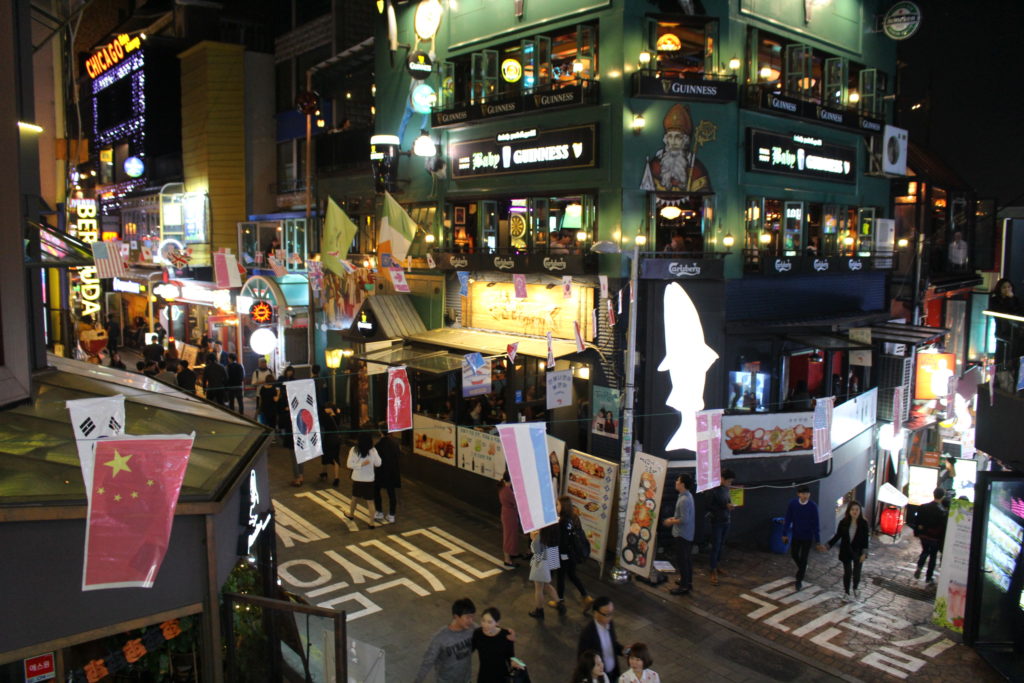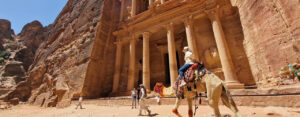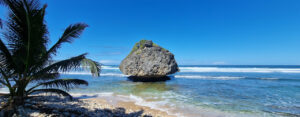
A Korean Fall
Throughout the autumn and darkening winter of my year teaching in South Korea, I went on as many short trips/weekends away as I possibly could. This was partly to see the new country I called home and partly to take my mind off the job that wholly occupied my thoughts and stresses from Monday to Friday. The Chuseok holiday is one of Korea’s most important national occasions, as the cities empty and people visit their ancestral hometowns to celebrate a good harvest and to feast on traditional food. Nowadays, it is more a chance for families to get together and eat and drink as much as they possibly can over a three-day period. But for me, it simply provided enough time off work to be able to take a flight to the Jewel of Korea, known as Jeju Island (approximately sixty kilometres south of the mainland), to attempt to summit the country’s tallest peak: Mount Hallasan.
With time extremely short, I only had one day with which I could attempt the hike – whether the weather obliged or not. Unfortunately, it did not. With a backpack filled with instant noodles and Pocari Sweat (the charmingly-named Japanese sports drink), I began my trek through the mist. Hallasan is an enormous shield volcano which forms the bulk of Jeju Island and, as such, has a very gradual incline to its peak. The downside of this is that the trail comprises almost ten kilometres of continual wooden steps. With calves burning, rain falling, and not a view of more than twenty metres, I eventually reached the crater lake at the summit and awaited the vista that dons all of the postcards. I waited and waited. I waited until every item of clothing was soaked through and I could no longer fend off hypothermia. Below are photos of one: what I could have seen, and two: what I actually saw…
Despite the visual disappointment, this was the first time I had hiked a mountain of this height (almost two thousand metres), and it provided a reasonable amount of practice for tougher climbs ahead. I returned to the mainland the following day and quickly started organising a trip to the north-eastern corner of the country – not to climb a mountain – but to visit the location set to host the Winter Olympic Games in just over a year’s time. Pyeongchang was the official location of the Games (not to be confused with Kim Jong-un’s backyard), although the vast majority of events were to take place in the coastal town of Gangneung, a spot more associated with sand than snow. This was where we began our journey.
The following day we headed five minutes up the road to Jumunjin, for a fish market experience one will never forget. The entire town smelled like the inside of a trout’s gills, with stalls, tanks and buckets full to the brim with all manner of marine life. Countless hoses and tubes kept freshwater running from vessel to vessel, in a kind of irrigation system not unlike the Hanging Gardens of Babylon. Most of the produce had been caught earlier that morning and had literally been thrown off the countless fishing boats, a few metres away, and straight onto the market floor. Without the convenience of an oven on our mini-trip, we didn’t have much use for an ocellated skate, although we did treat ourselves to three pounds of common carp, a bagful of Pacific herring, a Japanese eel and one olive flounder.
A little further along the coast lies one of the most bizarre and fantastical hotels this side of the Dog Bark Park Inn in Idaho (a hotel in the shape of a giant beagle). The Sun Cruise Resort is a hotel designed in the image of a Caribbean cruise ship, built on the edge of a large cliff overlooking the tempestuous East Sea. At over one hundred and sixty-five metres in length, and almost fifty metres in height, it has become one of South Korea’s most popular tourist attractions (even for those not affluent enough to afford a night there like us). However, the impoverished are still allowed to wander the grounds, lobby and bars, brushing shoulders with some of Korea’s wealthiest morons. We did treat ourselves to a single beer each in the revolving bar on the top floor before retreating to our budget accommodation in the town.
The final stop on our coastal commute was the city of Pohang, a foreign teacher’s paradisical landing spot. Bars, beaches, waterfalls, mountains – all without the chaos of working in a Seoul or a Busan. We took a nighttime promenade along the seafront, passing several unique art installations, as well as a very Korean pier (with Buddhist temple as seen below). We ended our brief trip on bar street, joining the hordes of other foreigners drinking to forget that tomorrow is Monday and another work week lies ahead. With winter just around the corner, I’ll be looking at warmer climes for my forthcoming trips, before resuming my tour around the country sometime in the new year. So until then, 원숭이도 나무에서 떨어진다 (even monkeys fall from trees).
J
